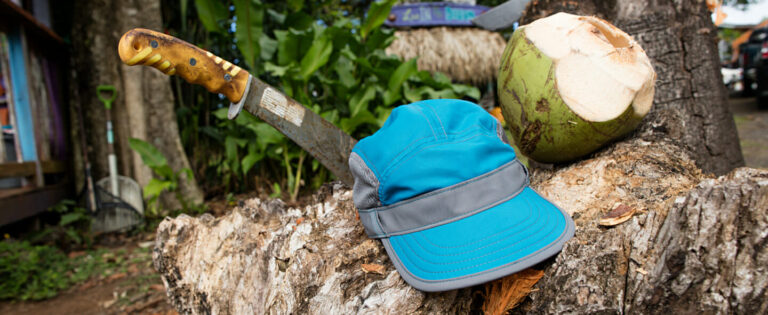It’s time for a new sleeping bag. And, not just any sleeping bag. This bag has got to be tough and durable. Its pack size and weight are less important for the time being. Over the course of this gruelling search for a new sleeping bag, you’ll stumble upon heaps of terms, including but in no way limited to down fill, comfort rating and the like. And, you’ll inevitably come across the term synthetic sleeping bag.
And, for good reason: there are plenty of advantages of synthetic sleeping bags, and toughness is one of them. But, you may be asking yourself: what the deuce are synthetics doing in a sleeping bag, anyway? Wouldn’t down insulation be much better?
What is synthetic insulation?
The first sleeping bag with synthetic insulation came to market as early as the 1950s. The Norwegian brand Ajungilak, which belongs to Mammut today, was one of the pioneers in the development and manufacturing of sleeping bags. In fact, they quickly established themselves as the go-to brand for international expeditions and normal outdoor travels. But, ever so gradually, other companies began making sleeping bags with synthetic insulation as well.
As you have probably already gathered, the insulation in this case is provided by synthetic fibres. How? Well, these extremely thin fibres loft and thus trap heat, resulting in an insulating layer. But, in order for the fibre to loft to their full potential, the surface of the fibres has to be as smooth as possible. For this reason, synthetic fibres used for high-quality sleeping bag insulation have a silicone coating. This treatment serves to help the synthetic fibres perpetually repel each other. The smoother and more robust the silicone layer is supposed to be, the more complex the manufacture of the fibres. But, the time and effort put into the process is definitely worth it, because it results in a long-lasting fill that won’t lose its fill power even after extended periods of use. The quality of the fill is one of the main reasons for the major price difference you’ll see every now and again between synthetic sleeping bags.
The advantages

The big advantage of synthetics is that they hardly absorb any moisture. If the sleeping bag does get wet at some point, its synthetic insulation will maintain its insulation properties even when wet. Plus, it dries quickly as well. Another great thing about synthetics is that they’re very resilient, making them incredibly easy to care for.
If you tend to travel in regions with high humidity, this is something you will certainly appreciate. For long trips and expeditions in the winter, you’ll want to opt for a synthetic bag as opposed to down as well because it may be days or even weeks before you’re able to dry your sleeping bag properly. If you were to use a down sleeping bag in such conditions, there’d always be the risk of the down clumping up when it gets wet, which would result in the down losing its insulation properties, leaving you out in the cold for the rest of the trip! A nightmare in icy-cold temperatures, to say the least.
Thanks to the resilience of synthetic insulation, synthetic sleeping bags are perfect for overnights at campsites, trips in warmer regions or when you crash on your mate’s couch at the weekend as well.
Things to consider when shopping for a sleeping bag
Before buying a synthetic sleeping bag, be sure that it has high-quality insulation. Materials such as MTI from Ajungilak / Mammut or G-Loft from Carinthia are of the highest quality and have been tried and tested on various trips and expeditions. So, it will come as no surprise that the CARTINTHIA-G 250 – synthetic sleeping bag and the NORDISK-Oscar Mummy – synthetic sleeping bag have established themselves as absolute classics for winter expeditions.
The insulation
The synthetic insulation in the sleeping bag has been designed for expeditions to damp, cold places. Synthetic sleeping bags often have a “loose shell” construction with off-set stitching to prevent from cold air penetration and give maximum warmth. Synthetic bags also often have “offset quilted layers”, which help to eliminate cold spots, making for a warmer sleeping bag.
The right temperature rating
As with all sleeping bags, you should always make sure it has the appropriate temperature rating. We recommend paying close attention to the T-Comfort rating, which is the lowest temperature you’ll ever want to use the bag in. That way, you won’t run the risk of freezing. Some manufacturers use the “T-Limit” as the lowest temperature, which can give the impression that the sleeping bag is warmer than it actually is. We know from experience that it can get pretty chilly in many sleeping bags when exposed to these kind of temperatures, so, again, pay close attention to the T-Comfort rating, regardless of whether you’re a man or a woman.

Die Form des Kunstfaserschlafsacks
Another important factor is the shape of the sleeping bag. If you’re just looking for one to use sporadically for camping or sleeping over at your mate’s, a rectangular sleeping bag with a circumferential zip is your best bet. That way, you’ll be able to convert it into a blanket in no time at all whenever you get too hot. A long zip is a really nice feature, as it will allow you to manually adjust how warm it is in the bag.
If you want the sleeping bag to be as warm as possible, we recommend you go for a mummy-shaped bag. These are more form-fitting, so there is less air around your body and thus less heat needed to maintain a comfortable temperature. Do make sure that the size of the sleeping bag corresponds with your size. You don’t want it to be too long or too short.
The biggest disadvantage of synthetic bags is that they are much heavier and have a larger pack size than down sleeping bags. But, that’s about it. Synthetic sleeping bags are more resilient and easier to care for than their down counterparts. You can even machine-wash a lot of them. Plus, they’re usually less expensive than down, too, which, for many, is the winning argument.





